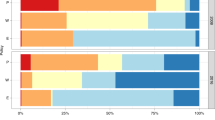Abstract
Is Dr. Krause (NATURE, vol. xi. p. 456, vol. xii. p. 14) acquainted with the manner in which cascarilla bark modifies the physiological effects of tobacco smoking? The addition of a few very small fragments of the bark can hardly be supposed to materially affect the amount of carbonic oxide produced; and yet, with such an admixture, the strongest tobacco may be smoked by a tyro without, in most cases, the production of the usual nauseating effects. Loss of appetite, thirst, vascular and nervous depression are sometimes produced if such a mixture is smoked in excess. On the other hand, if Dr. Krause's theory, that the nausea, &c., of tobacco smoking is due to the carbonic oxide inhaled, be admitted, the question is suggested whether some of the volatile products of burnt cascarilla bark are antagonistic in their physiological action to the gas in question?
This is a preview of subscription content, access via your institution
Access options
Subscribe to this journal
Receive 51 print issues and online access
$199.00 per year
only $3.90 per issue
Buy this article
- Purchase on SpringerLink
- Instant access to full article PDF
Prices may be subject to local taxes which are calculated during checkout
Similar content being viewed by others
Rights and permissions
About this article
Cite this article
S., C. Physiological Effects of Tobacco Smoke. Nature 12, 48 (1875). https://doi.org/10.1038/012048a0
Issue date:
DOI: https://doi.org/10.1038/012048a0



